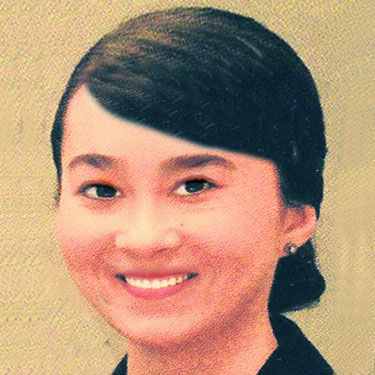如何写英文病历-病历与时态
作者:古龙 2009-07-04




语际翻译公司 转载请注明https://www.scientrans.com
∗本栏目部分文章内容来自互联网,部分已经过本站编辑和整理,如有版权事宜请联系Email/MSN jesczhao@hotmail.com
二、病历与时态
1.现症历(present illness):
1)A.现在式:表示一般的真理、职业、人格、习惯和现在的事实、动作或状态。
例1:Sedentary habits often interfere with health
例2:He is mentally deranged and disoriented as to time, place, and person
例3:He gets up at 6 every morning.
B.现在进行式(Be+ pres. p.)表示现在某动作正在进行中。
例1:Both his parents are still living and well.
例2:The patients is getting worse and worse.
例3:The patients is progressively doing well.
C.表「经常的习惯」也用进行式,通常与always, constantly等副词连用。
例1:He is always taking a nap in class.
例2:He is constantly forgetting peoples’ names.
例3:He is for ever complaining of headaches.
D.通常不用进行式的动词。
a)不随意动词( Verbs of involuntary actions):
-知觉( perception):feel, hear, notice, see, smell等。
例1:Whenever he has a cold, he can neither taste nor smell.
-知识(knowledge):believe, (dis)agree, doubt, find, forget, know, mind, remember, think, understand等。
例1:She does not remember specific scratches which might have preceded the present lesions.
-感情( emotion):desire, despise, disgust, fear, hate, hope, (dis)like, love, prefer, want等。
例1:He likes lobster, but it disagrees with him.
b)表示继续状态的动词( Verbs of continuous state):表示存在、所有等动
词:appear, be, belong, consist, flow, have, hold, live, look, possess, resemble, seem等。
例1:Her fingers and hands are stiff and cyanotic.
例2:He has no discomfort and eats well.
2)A.现在完成式( Have+ p.p)医学.全.在线.网.站.提供
a)表示动作的完了(completion of an action)或其结果的现在状态(present state of things):
例1:The patient has passed the crisis. = The patient is out of danger now.
例2:He has caught cold. = He has a cold now.
注:常用的连用副词为:all this while, (not) yet, already , just, now, by this time, today, this week( or month, year, etc.), hitherto, till now, up to( till) now, recently, lately, of late等。
比较:过去式仅表示过去的动作状态;现在完成式则以表示现在为主。
例1:He had no appetite for food. (过去式)→表示过去某时有过食欲不振
例2:Lately he had had no appetite for food. (现在完成式)→表示现在仍然胃口不佳。
b)表示截至现在为止的经验( experience):
例1:He has seldom consulted a doctor in his life.
例2:He has never been treated by a doctor since he was born.
注:表示经验时,常用的副词为:ever, before, once, many times, (very) often, seldom, sometimes, in one’s time等副词。比较:同一动词有时表示完了,有时表示经验,视其所连用的副词而决定。
例1:He has just undergone a nephrectomy.→表示动作完了。
例2:He has undergone a nephrectomy once.→表示经验。
c)表示截至现在为止的动作或状态的继续(continuance)
例1:He has been deaf in the left ear since the age of 18 and has experienced slight dizziness on stooping.
例2:Except fro a slight loss of energy, he has always felt well.
例3:For the past 10 years he has had persistent and high-pitched tinnitus in his left ear, consisting a buzzing sensation and, occasionally, the sounds of bells.
注:常用的连用副词为:since, always, from, for, these, how long?
B.现在完成进行式( Have been +~ing)
a)表示以前开始的动作继续到现在的状态:
例1:He came here 2 weeks ago, and has been lying sick with a cold since then.
例2:The patient has recently had experience of memory loss and of spells of dizziness. For the preceding 5 years she has been receiving treatment for hypertension.
b)表示「习惯」:
例1:The patient has been smoking excessively.
例2:She has been chewing a wad of bubble gum all day.
注:常用的连用副词为:since, for, how long?,these, form, always等。
比较:
例1:He has been learning medicine for 5 years. (继续)
例2:He has learned medicine for 5 years. (经验)
2.既往历(past history):大半用过去式,但发生过去某一定时间以前者,宜用过去完成式;如果疾病发生的前后关系甚明显,或以年代顺序记载时,仍可用过去式。
1)A.过去式:用以表示过去的动作、状态、习惯等且与现在的情形毫无关联。
a)发生于过去某时者:
例1:An unknown number of years ago he was said to have pneumonia.
例2:In addition to the above symptoms, he noted some vague abdominal pain for a couple of months in the past.
例3:At that time she had a slight nonproductive cough and mild exertional dyspnea.
例4:Before therapy, she was unable to swallow anything but small sips of water.
b)过去某时以后的状态:
例1:In the previous month she noticed that the stools were greatly flattened. Subsequently she became aware of a bearing-down pain the rectum.
例2:Menarche occurred at age 13, thereafter menses were regular, every 28 days, lasting 3 to 4 days each time.
例3:The patient had tinnitus in his left ear 10 years before being discharged for the military service. Several year later, he noted loss of hearing on the left.
例4:In June 1956, a sterilizing operation was performed at a hospital. For the ensuing 5 months the patient was troubled with intermittent attacks of vague abdominal pain.
例5:Two years after this episode she had one short attack of vertigo but has been attack-free for 2 years.
注1:过去式常用的连用副词:ago, last night, yesterday, the day before yesterday, the other day, this morning , just now等。
注2:现在完成和过去两者都可用的连用副词:just, ever, lately, recently,
once, always, already, this morning, today, every night, this week, these few days, for the last few days, since last week, before, yet等。医学.全在.线www.med126.com
B.表示过去的习惯时,须用used to , was (were) accustomed to ~或had the habit to ~等。用would来表示过去的习惯时,大抵与often, sometimes等副词连用。
例1:He used to work far into the night.
例2:He would sometimes come home drunk, and beat his wife.
C.过去进行式( Be 动词的过去式+ pres. p.):表示在过去某一时间正在进行 的动作:
例1:One sister was suffering from active tuberculosis.
例2:He was having mild symptoms of fever and nausea at the time he was seen.
例3:He was raising large amounts of purulent sputum at that time.
D.过去完成式( Had + p.p.):表示截至过去某一时间为止的动作的完了、经验、继续等。
a)完了( completion):
例1:The patient had already expired when he came.
例2:By that time he had immunized against smallpox.
连用副词:already, by that time, (not) yet, only just等。
b)经验(experience):
例1:Till then he had never seen so-called bone-setter.
例2:He could not repeat what he had said before.
c)继续(continuance):
例1:He had long been ill in bed.
例2:He had been ill in bed for a long time.
E.过去完成进行式(Had been + pres. p.):表示继续过去某一时间的动作。
例1:Up to that time, he had been drinking mush wine.
例2:Due to her increasing constipation, she had been taking laxatives daily for one year before admission.
比较:
例1:I was sleeping when he came. (过去进行式)
例2:I had been sleeping for an hour before he came.(过去完成进行式)
来源:医学全在线
1.现症历(present illness):
1)A.现在式:表示一般的真理、职业、人格、习惯和现在的事实、动作或状态。
例1:Sedentary habits often interfere with health
例2:He is mentally deranged and disoriented as to time, place, and person
例3:He gets up at 6 every morning.
B.现在进行式(Be+ pres. p.)表示现在某动作正在进行中。
例1:Both his parents are still living and well.
例2:The patients is getting worse and worse.
例3:The patients is progressively doing well.
C.表「经常的习惯」也用进行式,通常与always, constantly等副词连用。
例1:He is always taking a nap in class.
例2:He is constantly forgetting peoples’ names.
例3:He is for ever complaining of headaches.
D.通常不用进行式的动词。
a)不随意动词( Verbs of involuntary actions):
-知觉( perception):feel, hear, notice, see, smell等。
例1:Whenever he has a cold, he can neither taste nor smell.
-知识(knowledge):believe, (dis)agree, doubt, find, forget, know, mind, remember, think, understand等。
例1:She does not remember specific scratches which might have preceded the present lesions.
-感情( emotion):desire, despise, disgust, fear, hate, hope, (dis)like, love, prefer, want等。
例1:He likes lobster, but it disagrees with him.
b)表示继续状态的动词( Verbs of continuous state):表示存在、所有等动
词:appear, be, belong, consist, flow, have, hold, live, look, possess, resemble, seem等。
例1:Her fingers and hands are stiff and cyanotic.
例2:He has no discomfort and eats well.
2)A.现在完成式( Have+ p.p)医学.全.在线.网.站.提供
a)表示动作的完了(completion of an action)或其结果的现在状态(present state of things):
例1:The patient has passed the crisis. = The patient is out of danger now.
例2:He has caught cold. = He has a cold now.
注:常用的连用副词为:all this while, (not) yet, already , just, now, by this time, today, this week( or month, year, etc.), hitherto, till now, up to( till) now, recently, lately, of late等。
比较:过去式仅表示过去的动作状态;现在完成式则以表示现在为主。
例1:He had no appetite for food. (过去式)→表示过去某时有过食欲不振
例2:Lately he had had no appetite for food. (现在完成式)→表示现在仍然胃口不佳。
b)表示截至现在为止的经验( experience):
例1:He has seldom consulted a doctor in his life.
例2:He has never been treated by a doctor since he was born.
注:表示经验时,常用的副词为:ever, before, once, many times, (very) often, seldom, sometimes, in one’s time等副词。比较:同一动词有时表示完了,有时表示经验,视其所连用的副词而决定。
例1:He has just undergone a nephrectomy.→表示动作完了。
例2:He has undergone a nephrectomy once.→表示经验。
c)表示截至现在为止的动作或状态的继续(continuance)
例1:He has been deaf in the left ear since the age of 18 and has experienced slight dizziness on stooping.
例2:Except fro a slight loss of energy, he has always felt well.
例3:For the past 10 years he has had persistent and high-pitched tinnitus in his left ear, consisting a buzzing sensation and, occasionally, the sounds of bells.
注:常用的连用副词为:since, always, from, for, these, how long?
B.现在完成进行式( Have been +~ing)
a)表示以前开始的动作继续到现在的状态:
例1:He came here 2 weeks ago, and has been lying sick with a cold since then.
例2:The patient has recently had experience of memory loss and of spells of dizziness. For the preceding 5 years she has been receiving treatment for hypertension.
b)表示「习惯」:
例1:The patient has been smoking excessively.
例2:She has been chewing a wad of bubble gum all day.
注:常用的连用副词为:since, for, how long?,these, form, always等。
比较:
例1:He has been learning medicine for 5 years. (继续)
例2:He has learned medicine for 5 years. (经验)
2.既往历(past history):大半用过去式,但发生过去某一定时间以前者,宜用过去完成式;如果疾病发生的前后关系甚明显,或以年代顺序记载时,仍可用过去式。
1)A.过去式:用以表示过去的动作、状态、习惯等且与现在的情形毫无关联。
a)发生于过去某时者:
例1:An unknown number of years ago he was said to have pneumonia.
例2:In addition to the above symptoms, he noted some vague abdominal pain for a couple of months in the past.
例3:At that time she had a slight nonproductive cough and mild exertional dyspnea.
例4:Before therapy, she was unable to swallow anything but small sips of water.
b)过去某时以后的状态:
例1:In the previous month she noticed that the stools were greatly flattened. Subsequently she became aware of a bearing-down pain the rectum.
例2:Menarche occurred at age 13, thereafter menses were regular, every 28 days, lasting 3 to 4 days each time.
例3:The patient had tinnitus in his left ear 10 years before being discharged for the military service. Several year later, he noted loss of hearing on the left.
例4:In June 1956, a sterilizing operation was performed at a hospital. For the ensuing 5 months the patient was troubled with intermittent attacks of vague abdominal pain.
例5:Two years after this episode she had one short attack of vertigo but has been attack-free for 2 years.
注1:过去式常用的连用副词:ago, last night, yesterday, the day before yesterday, the other day, this morning , just now等。
注2:现在完成和过去两者都可用的连用副词:just, ever, lately, recently,
once, always, already, this morning, today, every night, this week, these few days, for the last few days, since last week, before, yet等。医学.全在.线www.med126.com
B.表示过去的习惯时,须用used to , was (were) accustomed to ~或had the habit to ~等。用would来表示过去的习惯时,大抵与often, sometimes等副词连用。
例1:He used to work far into the night.
例2:He would sometimes come home drunk, and beat his wife.
C.过去进行式( Be 动词的过去式+ pres. p.):表示在过去某一时间正在进行 的动作:
例1:One sister was suffering from active tuberculosis.
例2:He was having mild symptoms of fever and nausea at the time he was seen.
例3:He was raising large amounts of purulent sputum at that time.
D.过去完成式( Had + p.p.):表示截至过去某一时间为止的动作的完了、经验、继续等。
a)完了( completion):
例1:The patient had already expired when he came.
例2:By that time he had immunized against smallpox.
连用副词:already, by that time, (not) yet, only just等。
b)经验(experience):
例1:Till then he had never seen so-called bone-setter.
例2:He could not repeat what he had said before.
c)继续(continuance):
例1:He had long been ill in bed.
例2:He had been ill in bed for a long time.
E.过去完成进行式(Had been + pres. p.):表示继续过去某一时间的动作。
例1:Up to that time, he had been drinking mush wine.
例2:Due to her increasing constipation, she had been taking laxatives daily for one year before admission.
比较:
例1:I was sleeping when he came. (过去进行式)
例2:I had been sleeping for an hour before he came.(过去完成进行式)
来源:医学全在线
- 评论
- seme:文章内容文章内容文章内容文章内容文章内容文章内容文章内容文章内容文章内容 章内容文章内容文章内容文章内容文章内容
- seme:文章内容文章内容文章内容文章内容文章内容文章内容文章内容文章内容文章内容 章内容文章内容文章内容文章内容文章内容

- 医生护士英语会话(11):西药(2)
2009-6-24 0:18:19 - 病人:早上好,大夫。 Patient: Good morning, doctor. ...
- 医生护士英语会话(10):西药(1)
2009-6-24 0:15:35 - 病人:我严重感冒。另外,还伴有头疼。请问我应该服用些什么药呢? Patient: I have...
期刊征稿
- 第四届IEEE生物信息与生…
2009-6-30 19:42:01 - 基本信息 主办单位: 四川大学,IEEE生物医学工程协会(EMBS) 承办单位 开始日期 2010/06/18 结束日期 截稿日期 2009/1...
- 第九届全国光电技术学术…
2009-6-30 19:35:58 - 基本信息主办单位: 中国宇航学会光电技术专业委员会承办单位 开始日期 2009/11/01结束日期 截稿日期 2009...
















